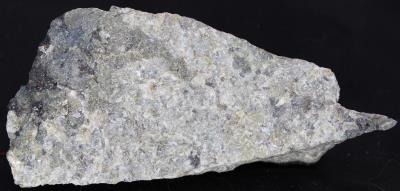 |
Petedunnite (green daylight mineral) in microcline feldspar, with quartz and franklinite from Talylor Road Dump, Franklin. Non-fluorescent. Photo by WP.
|
|
 | |  |
Petedunnite (light green, dark green), numerous tiny spots of exsolution willemite, microcline (gray), calcite (white), hematite (red) and quartz (clear) from Buckwheat Dump, Franklin, NJ. 8" x 4 3/4". From the collection of, and photo by JVF.
| | Petedunnite, willemite, microcline, calcite, hematite and quartz from Buckwheat Dump, Franklin, NJ under shortwave UV light. The willemite fluoresces green, calcite orange-red, the petedunnite, microcline, hematite and quartz are non-fluorescent. 8" x 4 3/4". From the collection of, and photo by JVF. |
|
